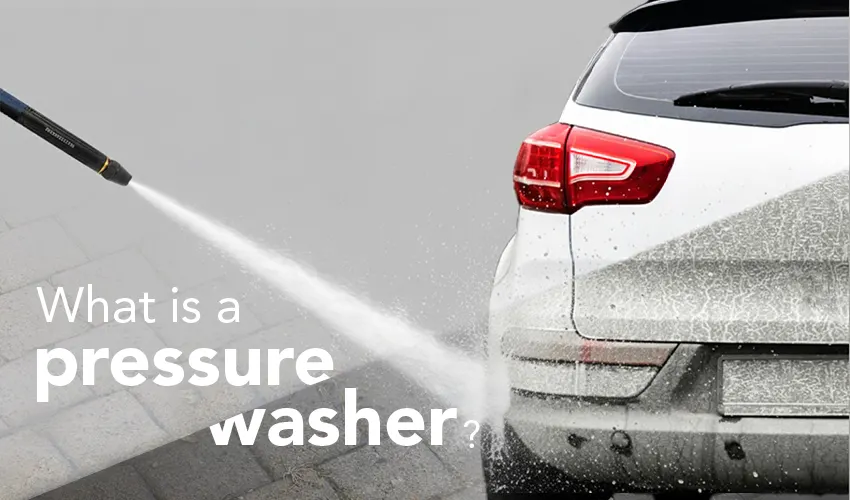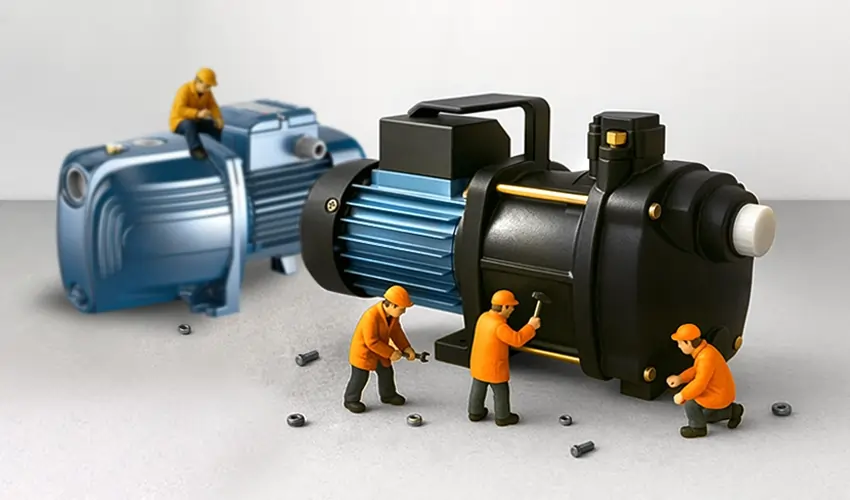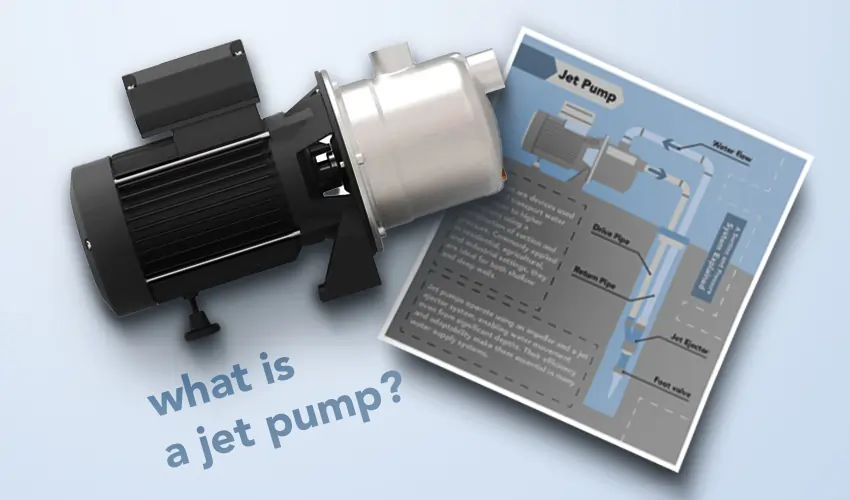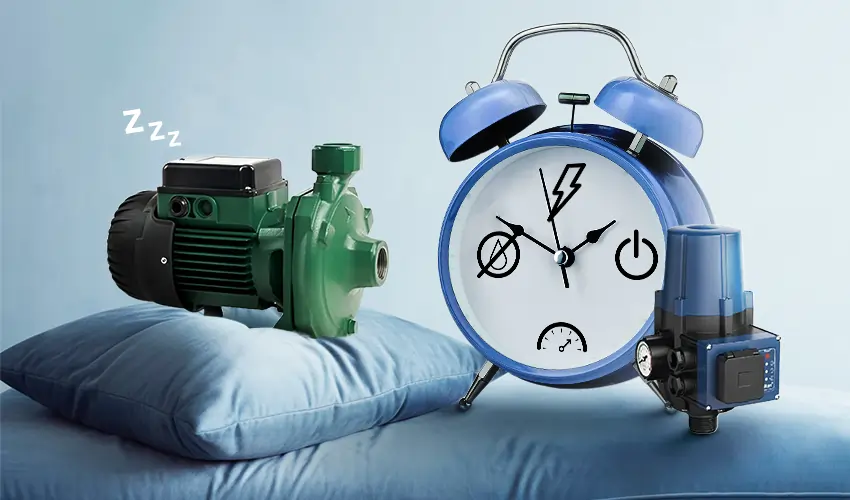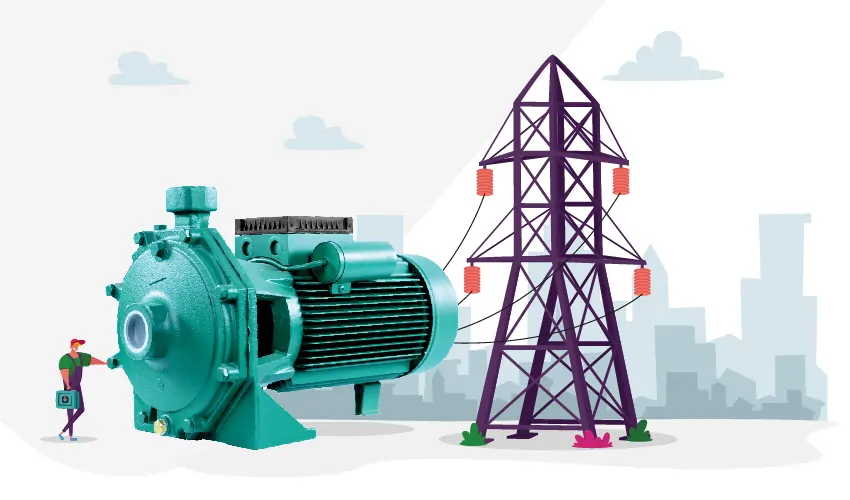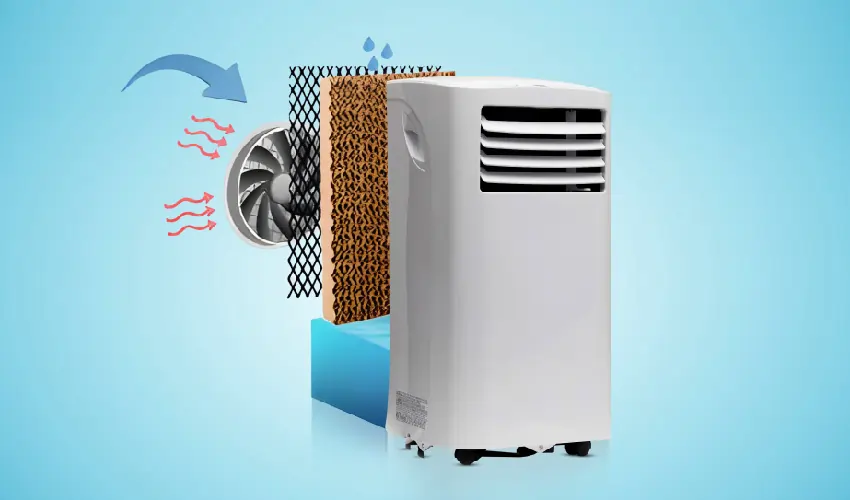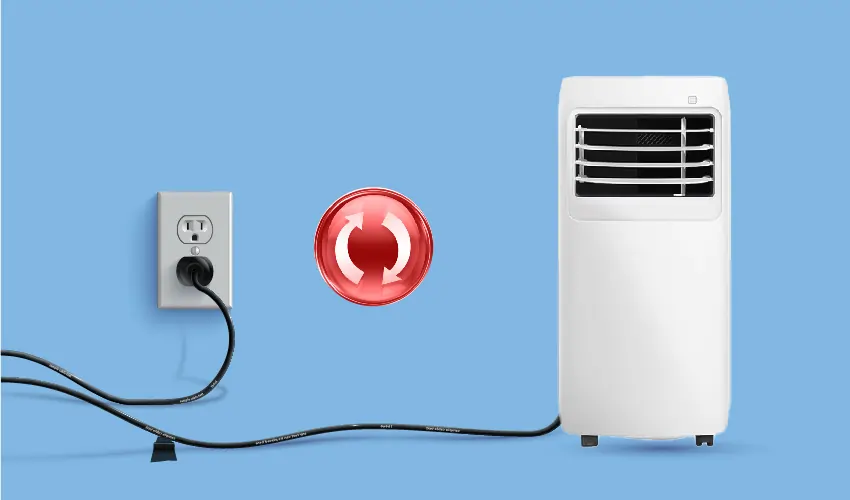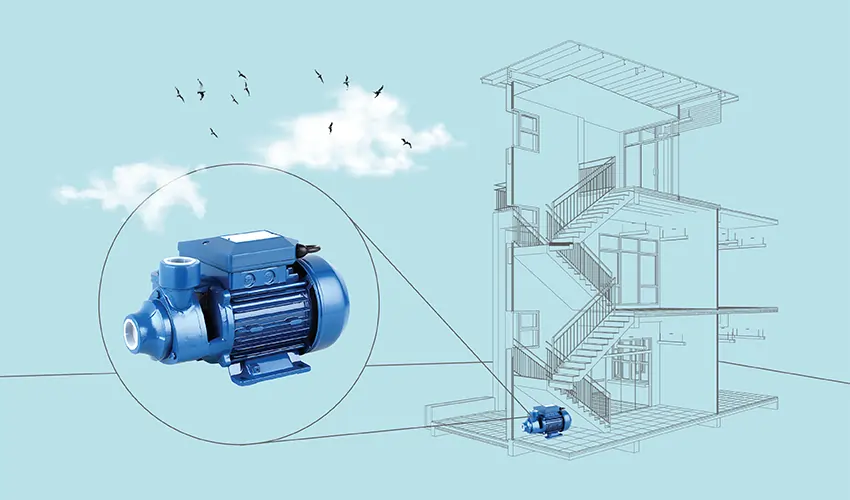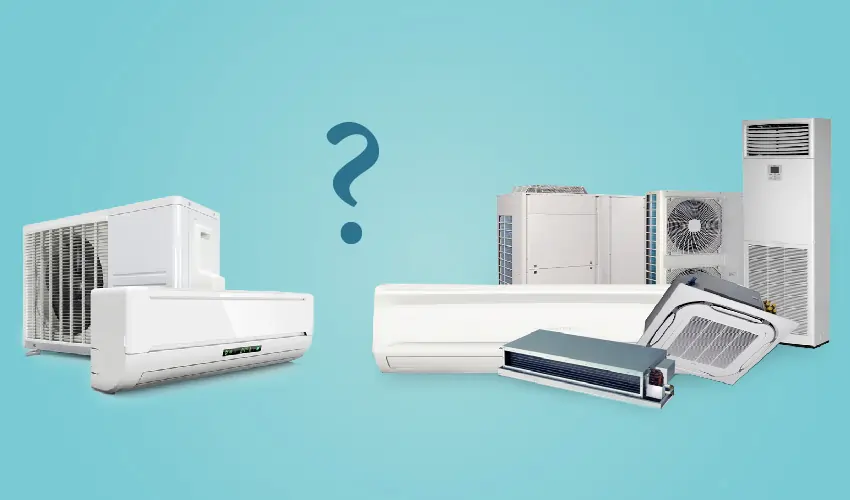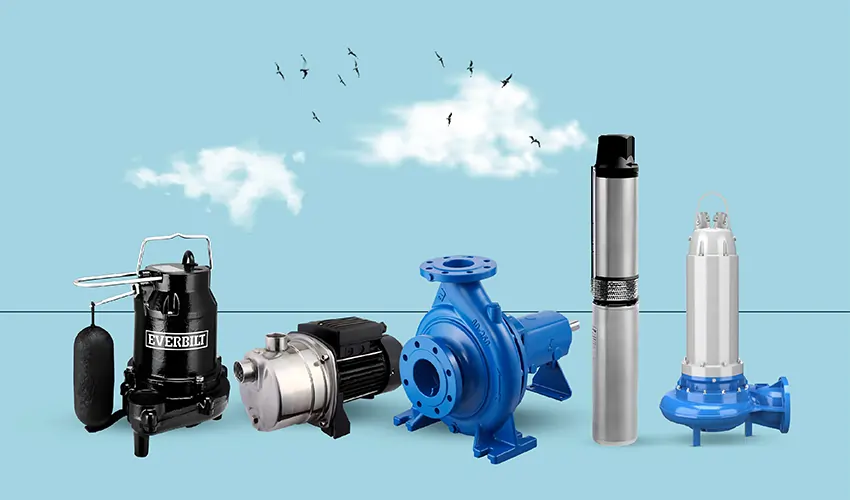This blog post aims to empower you with the knowledge and confidence to tackle common issues that may arise with your portable air conditioner and how to fix a portable air conditioner.
What is a Portable Air Conditioner?
A Portable Air Conditioner is a self-contained, mobile system used for cooling single rooms. They’re typically easy to install and move between rooms as they are usually mounted on wheels. They work by taking in air from the room, cooling it, and then directing it back into the room. The warm air and moisture are then vented out of the room through a window, door, or wall via an exhaust hose.
Portable air conditioners come in various sizes and capacities, measured in British Thermal Units (BTUs). The higher the BTU rating, the more powerful the air conditioner is. They can also come with additional features such as remote controls, timers, and even smart home capabilities
Who is the portable Air Conditioner Repairman?
A portable air conditioner repairman is a professional who specializes in diagnosing and fixing issues with portable air conditioners. They have the knowledge and skills to troubleshoot common problems such as the unit not starting, not cooling enough, or overheating.
They can handle tasks such as checking the temperature, inspecting the filter, looking for coolant leaks, checking the cable, breaker box, remote, thermostat, and more. If the issue is complex or the unit has reached the end of its life, they might recommend replacing the appliance with a new one.
What Abilities does a Portable Air Conditioner Repairman Have?
A portable air conditioner repairman possesses a diverse set of skills and abilities essential for diagnosing and fixing problems with these units. Here’s a breakdown:
Technical Skills
Understanding of Refrigeration Cycles: A deep understanding of how refrigeration cycles work is fundamental. This includes knowledge of refrigerants, compressors, condensers, evaporators, and the flow of refrigerant through the system.
Electrical Troubleshooting: Portable air conditioners use electrical components. Repairmen must be proficient in diagnosing electrical issues like faulty wiring, blown fuses, and problems with the control board.
Mechanical Troubleshooting: They need to be able to identify and fix mechanical problems like worn-out bearings, leaks in the refrigerant system, and issues with the fan motor.
Soldering and Brazing: Repairing refrigerant leaks often requires soldering or brazing skills to seal the system.
Use of Diagnostic Tools: Repairmen use various tools like refrigerant gauges, multimeters, and leak detectors to pinpoint problems.
Soft Skills:
Problem-Solving: They need to be able to analyze symptoms, identify the root cause, and devise effective solutions.
Communication: Effective communication is vital for explaining technical issues to customers, understanding their concerns, and providing clear instructions.
Customer Service: Repairmen should be patient, courteous, and professional when interacting with customers.
Time Management: They need to be organized and efficient in their work to complete repairs within a reasonable timeframe.
Safety Awareness:
Refrigerant Handling: Repairmen must be aware of the safety risks associated with handling refrigerants and follow proper procedures to minimize environmental impact.
Electrical Safety: They need to be knowledgeable about electrical safety practices and use appropriate safety equipment when working with electrical components.
What Items does the Portable Air Conditioner Repairman Check?
A portable air conditioner repairman typically checks the following items during a service call:
Power Supply: They check if the unit is receiving power properly. This includes inspecting the power cord, plug, and the electrical outlet.
Filters: They inspect the air filters to see if they are clogged or dirty. Dirty filters can restrict airflow and reduce the unit’s cooling capacity.
Coolant Levels: They check the levels of the refrigerant or coolant. If the levels are low, it could indicate a leak, which can affect the cooling efficiency.
Thermostat: They check the thermostat to ensure it’s working correctly and maintaining the desired temperature.
Exhaust Hose: They inspect the exhaust hose for any blockages or damage. The exhaust hose is crucial for venting out the hot air.
Internal Components: They check the internal components such as the fan, motor, and condenser coils for any signs of wear or damage.
Noise Levels: They listen for any unusual noises when the unit is running. Unusual noises can indicate a problem with the internal components.
Drainage: They check the drainage system to ensure it’s not clogged. A clogged drainage system can cause water to back up into the unit.
Controls and Settings: They verify that all controls and settings are functioning correctly, including the remote control if one is included with the unit.
How does a Portable Air Conditioner Repairman Troubleshoot?
A best portable air conditioner repairman uses a systematic approach to troubleshoot problems, following a logical progression to pinpoint the issue and implement the appropriate repair. Here’s a breakdown of the common steps involved:
1. Gathering Information
Customer Interview: The repairman starts by listening carefully to the customer’s description of the problem. This includes details like when the issue began, any unusual noises or smells, and any recent changes to the unit’s environment.
Visual Inspection: The repairman examines the unit for any visible signs of damage, leaks, or loose connections. They check the air filter, the condenser coils, and the drain hose for any obstructions.
2. Basic Checks
Power Supply: They verify that the unit is properly plugged in and receiving power. They check for blown fuses or tripped circuit breakers.
Air Filter: A dirty air filter can restrict airflow and reduce cooling efficiency. The repairman checks and cleans the filter.
Condenser Coils: The condenser coils need to be clean to dissipate heat effectively. The repairman inspects and cleans the coils if necessary.
Drain Hose: A clogged drain hose can cause water to overflow. The repairman checks and clears the drain hose.
3. Advanced Diagnostics
Refrigerant Levels: Using refrigerant gauges, the repairman checks the refrigerant levels in the system. Low refrigerant levels indicate a leak, which requires further investigation.
Compressor Operation: The repairman listens for any unusual noises from the compressor and checks its operation using a multimeter.
Electrical Components: Using a multimeter, the repairman tests the electrical components, including the control board, fan motor, and thermostat.
Leak Detection: If refrigerant levels are low, the repairman uses leak detection tools to locate the source of the leak.
4. Repair and Testing
Addressing the Issue: Based on the diagnosis, the repairman proceeds with the necessary repairs, such as replacing faulty components, sealing leaks, or cleaning the system.
Testing: After repairs are completed, the repairman tests the unit to ensure it is functioning properly. They check the cooling capacity, temperature settings, and overall performance.
5. Documentation and Customer Communication
Documentation: The repairman documents the problem, the repairs made, and any parts replaced.
Customer Communication: They explain the problem, the solution, and any necessary follow-up care to the customer.
Can I Repair the Portable Air Conditioner Myself?
Yes, there are some common issues with portable air conditioners that you might be able to fix yourself. However, please note that if you’re not comfortable with these steps or the problem persists, it’s best to contact a professional. Here are some issues you might be able to address:
Leaking Water: This can be caused by a full condensate reservoir, a clogged drainage line, or improper installation. Identifying the source of the leak is crucial for fixing the issue.
Not Cooling Effectively: Causes could include dirty filters, blocked air vents, low refrigerant levels, or issues with the evaporator or condenser coils.
Strange Noises: Odd noises coming from your portable air conditioner can be a sign of loose or damaged parts. These could include fan blades, motor bearings, or internal components.
Unit Not Turning On: This could be due to a tripped circuit breaker, a blown fuse, or a malfunctioning power cord. In some cases, the issue could also stem from a faulty thermostat or control board.
Malfunctioning Thermostat: A thermostat that’s not functioning correctly can cause your portable air conditioner to cycle on and off too frequently or not maintain the desired temperature.
Conclusion
In conclusion, a portable air conditioner is a convenient and flexible cooling solution for single rooms. If you encounter issues with your unit, some common problems can be addressed by yourself, such as cleaning filters or checking power supply. However, for more complex issues or if you’re uncomfortable performing these tasks, it’s best to call air conditioner maintenance service. They have the expertise to diagnose and fix a wide range of problems, ensuring your unit operates efficiently and effectively. Always remember, regular maintenance can prolong the lifespan of your portable air conditioner.



